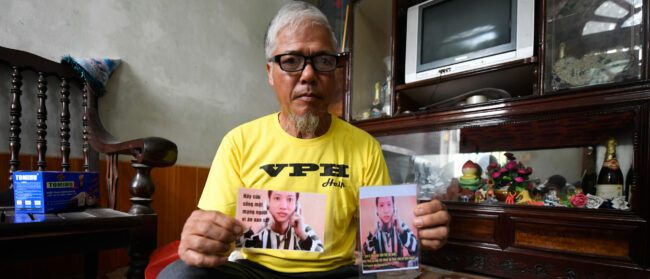Editor’s note: In August 2007, Southeast Asia Globe interviewed victims of a spate of acid attacks that had swept the Kingdom, leaving men and women alike disfigured, disabled and often unable to take care of their own most basic needs unaided. In the years since the height of Cambodia’s acid attack epidemic in the mid-2000s, legislation restricting the sale of corrosive substances and allowing for longer sentences for perpetrators has radically reduced the frequency of these attacks. But many acid burn victims continue to fight for the medical and social support that they need not just to survive their heinous attack, but to thrive. Now, for the first time, you can read their stories online.
“With murder the person only dies once. But acid burn victims die several times a day, everyday, for the rest of their lives. Every time they look in the mirror they are reminded of their terrible fate.” – Khairul Hafiz, project manager, Cambodian Acid Survivors Charity
It’s hard to imagine a more cowardly act of violence than attacking a fellow human being with acid, but unfortunately more than 140 people in Cambodia have been victims of such attacks.
Ironically, the increase in attacks is the result of better gun controls, making dangerous firearms are harder to come by. Acid is cheap and readily available at any motor or car repair shop. A litre costs no more than 1,000 riel, or 25 cents.
Acid attacks are premeditated acts of violence and rarely spontaneous acts of anger. The perpetrator must plan the attack by obtaining the acid, carrying it safely and stalking the victim. Usually it is an act of revenge, motivated by personal jealousy or hatred – the perpetrator blames the victim for a problem and wants to inflict as much physical and mental suffering as possible, as quickly as possible – but it can also be used instead of a firearm in an armed robbery.
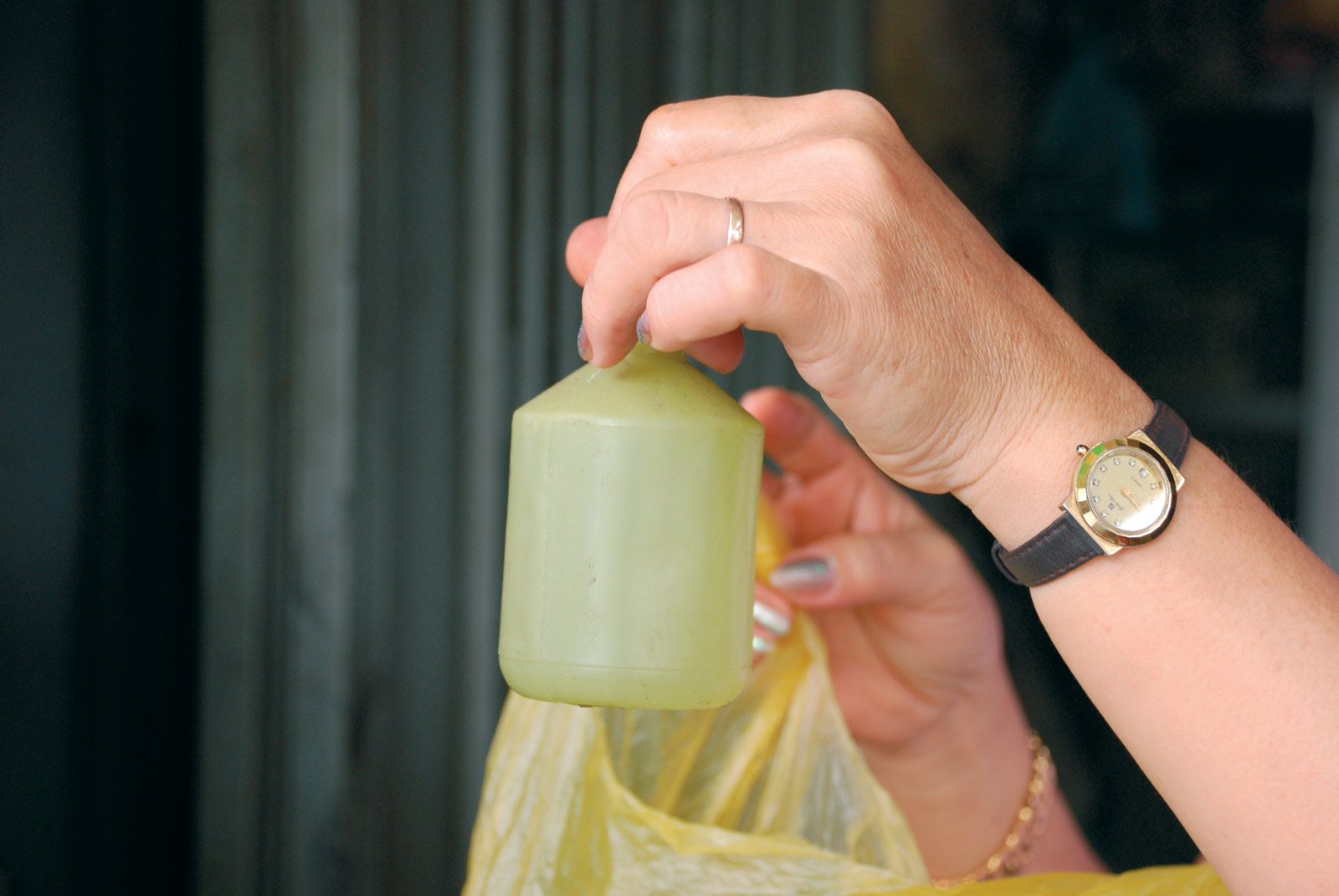
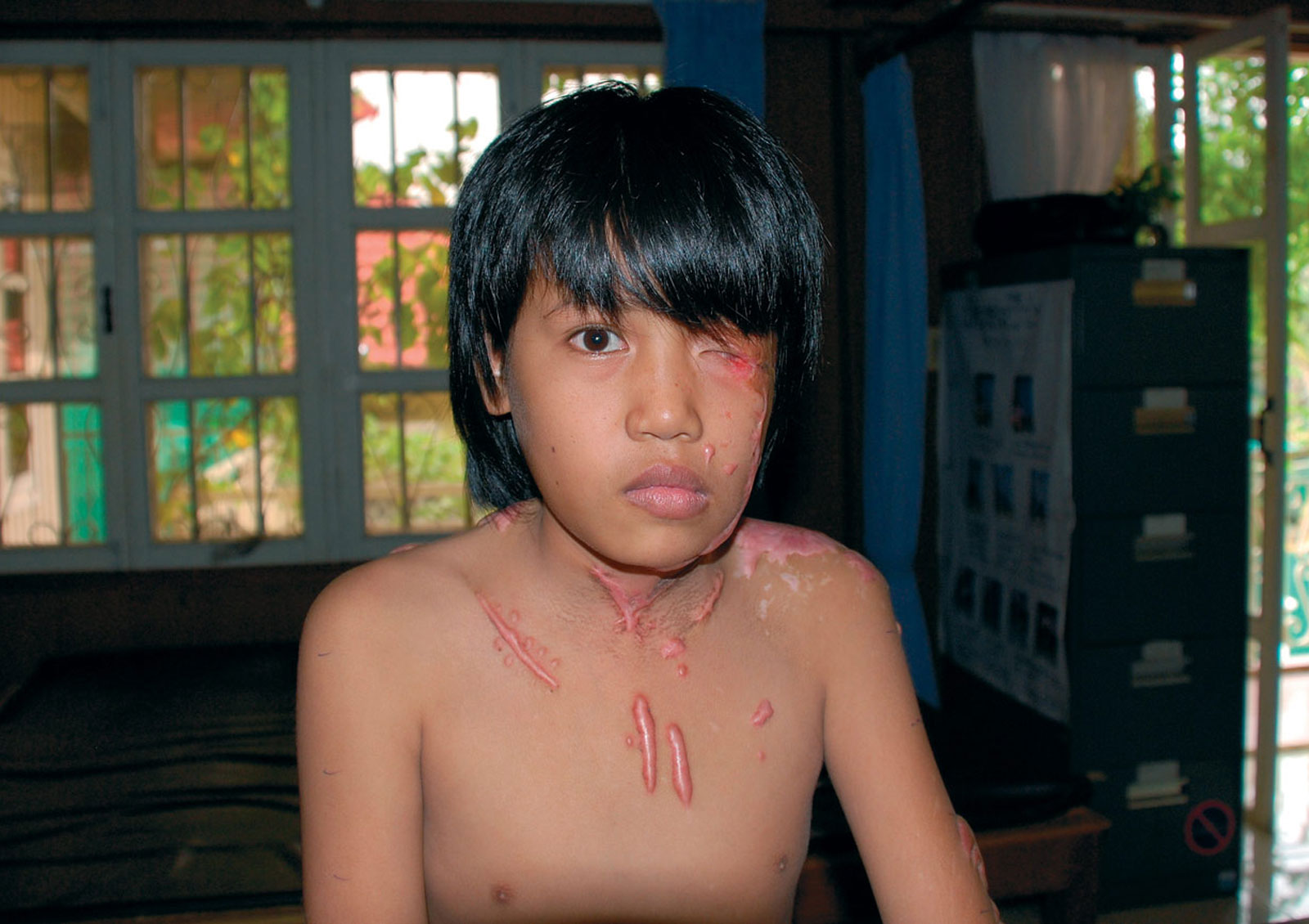
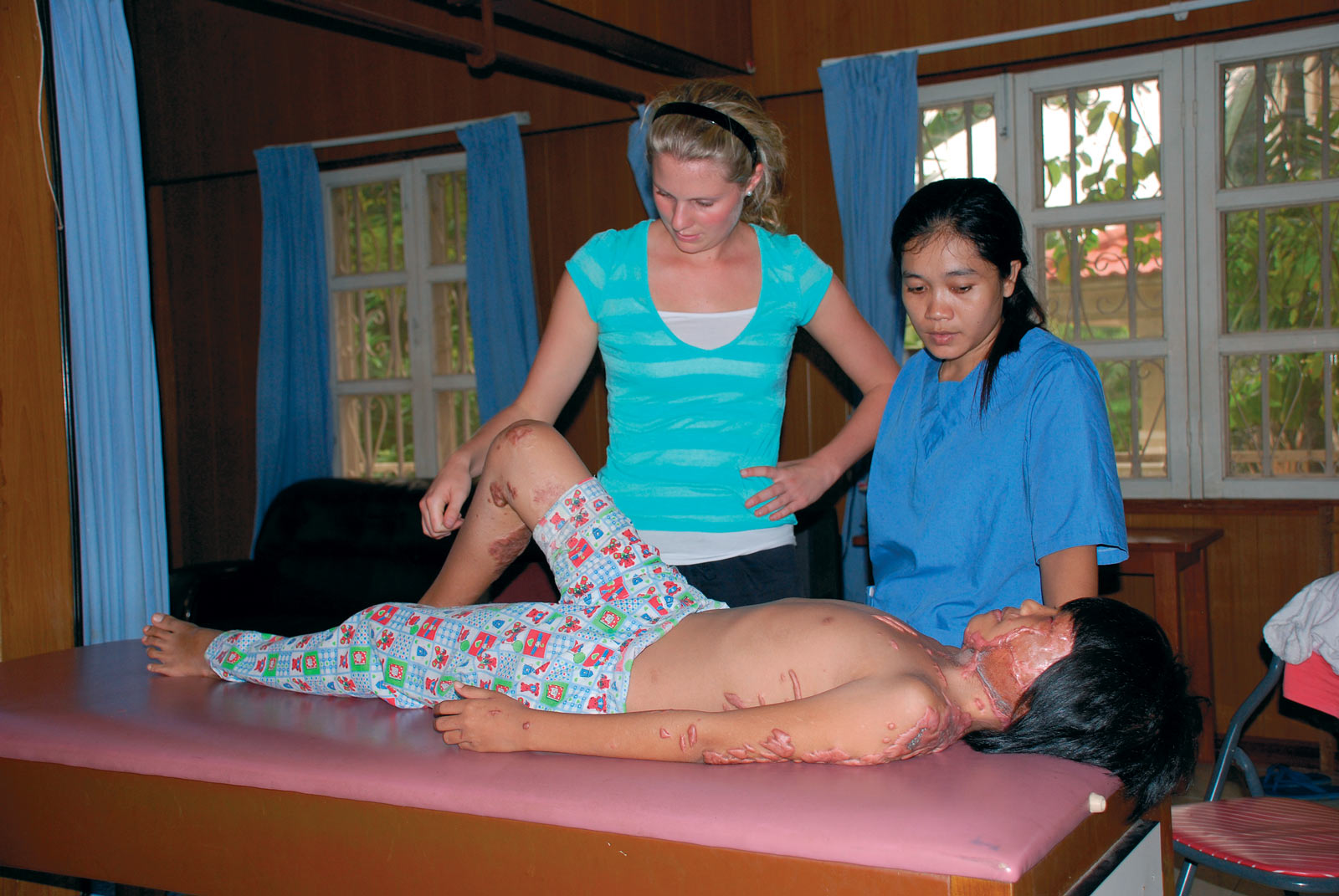
Women are especially vulnerable to this type of disfiguring attack. Many attacks are related to failed relationships and, in a society where widespread discrimination against women remains, women are often seen as dispensable victims.
But the consequences of these attacks are not so easily disregarded. Acid attack victims die. Those who manage to survive are often blinded for life or unable to eat or breathe on their own.
At the Kien Klaeng National Rehabilitation Centre a lot of burn victims go through years of reconstructive surgery by experienced foreign plastic surgeons. They are assisted by medical students from the faculty of medicine. They perform about 50 operations a year. Two thirds of their patients are repeat visitors. The severely burned may have to undergo as many as eight operations to revive normal function. At the moment 114 patients are on record at the hospital.
Unfortunately, physical trauma is only part of the problem. Often victims feel worthless and ashamed. Sadly, they may even be blamed for the attack by an unthinking society. Victims may never marry or have children, and even simple tasks like going to the market may be embarrassing and frightening for them.
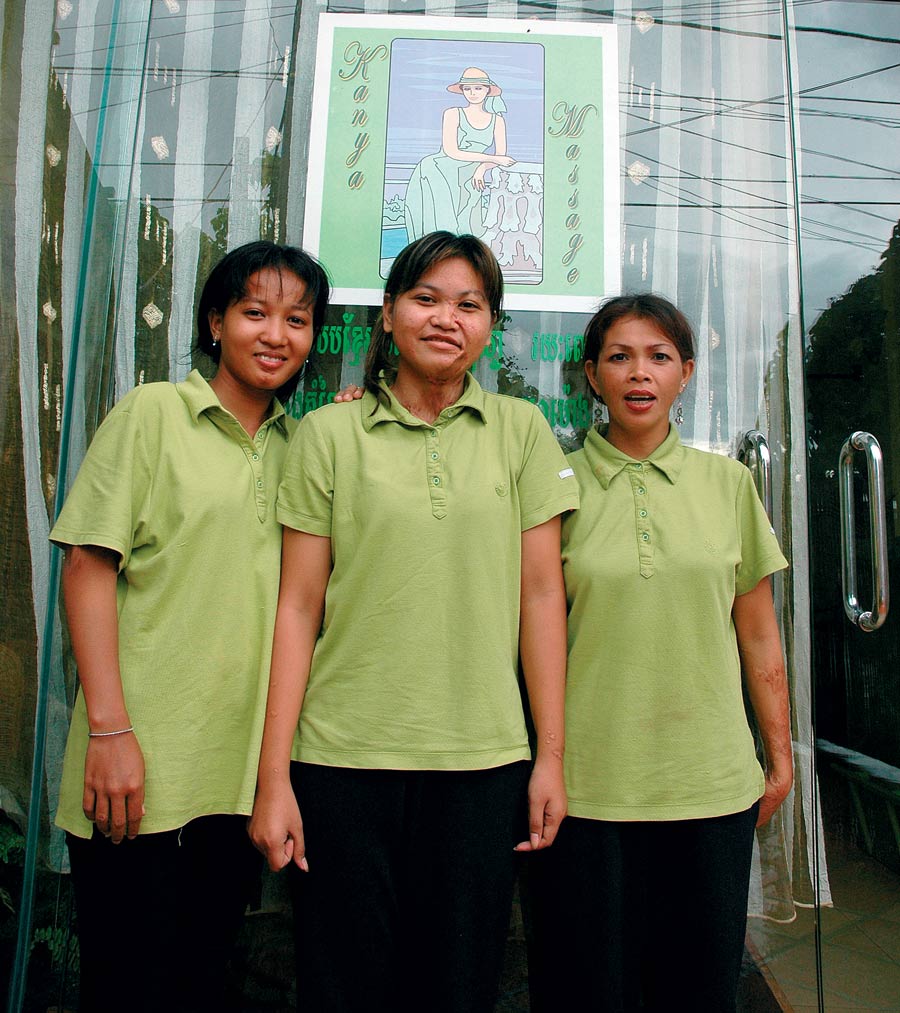
Srey Sokhom 20, was 14 years old when she was injured. She comes from Kompong Cham where acid is used in the process of drying rubber and processing cashew nuts. It can be bought everywhere. Kompong Cham has the second highest number of acid burn victims in Cambodia behind Phnom Penh.
Sokhom bought acid in the market for 200 riel. It was given to her in a plastic bag sealed with an elastic band, in the same fashion as take-away coffee in Cambodia.
“Cycling away from the market a kid ran out into the street in front of me. I hit the child, crashed the bike and the plastic bag split, splashing acid all over me.
Some people came over and put toothpaste on the burns to cool them. I know now that it wasn’t the right treatment, but they did it to help me.
My uncle took me to hospital. It burned and I felt very hot. In the hospital they poured water over me.
Later on I was taken to Kien Khleang for reconstructive surgery. No one had told me that acid was dangerous. I don’t expect to get married because of my burns. Cambodian people look down on us they always think that we stole someone else’s husband. They don’t know that we were injured as children.”
Penny Tynan has been working for two years as a fundraiser and programme coordinator for the Children’s Surgical Centre (CSC) run by Rose charities at Kien Klaeng National Rehabilitation Centre. She is involved in helping acid burn victims overcome both the physical as well as the terrible mental scars caused by being an acid burn victim.
“Once a month we run intertraining courses,” she says. “Most burn victims are very reluctant to join society – they get rejected constantly. Last year we made an outing to Sasoya centre with ten burn victims and were prohibited access at the entrance by a guard who wouldn’t let us in. Yet another slap in the face of the acid burn victims.”
The general perception in Khmer society is that it was probably the victim’s own fault. “The tolerance for violence in Khmer society is amazing; it’s out of proportion,” says Tynan. “That’s why we plan a survey to get a better understanding of how Khmers, among themselves, perceive acid attacks.”
The latest attack happened on June 13th this year. Kiri Chariya, an 18 year-old high school student, was attacked with sulphuric acid by two men as she walked home on a busy street from Wat Koh High School. She received third degree burns to her face that will most likely blind her for life. After a short stay at Calmette hospital, she was taken to Vietnam for further treatment. Her parents had been in contact with Rose Charities, asking them to cover her medical costs of $2,000. They couldn’t do this, but offered to take her to Kien Khleang for further treatment in their own ambulance donated by ANZ bank.
“Sometimes the victims come directly to us, but usually they don’t know of our existence. If she had come straight here, we would have treated her on the spot. We are as capable of treating burn victims here as they are in Vietnam,” says Tynan.
![Chou Sreya works at ABC’s Seeing Hands massage centre. “Returning to society [after her attack] was a radical change”](https://southeastasiaglobe.com/wp-content/uploads/2019/06/53-use.jpg)
Chour Sreya was doused with sulphuric acid in 1999 as she stepped out of a car in front of Central market. She sustained third-degree burns to her face and is blinded for life. “I wasn’t aware that I had been attacked with acid, I felt as if someone had thrown hot water in my face. I thought that my friends were playing a joke on me.
Later on I felt a burning sensation that just got worse and worse, as if my face was melting away. Then my friend started screaming that it was acid.
The pain was just indescribable. They wanted to hose me with water but I told them not to. I didn’t know at that time that it would have helped me.”
Her attackers have never been found.
“It would be easier for me not to feel anger towards them if they had been caught and prosecuted.
Right after the accident I just wanted to die. In the beginning I felt hopeless, I had lost my beauty, I had lost everything.
Before I could see, now I had lost my sight and good looks I felt useless. During the hospital stay I started to accept my situation. Returning to society was a radical change. Not only was it difficult for me to accept my own situation, but also when people see an acid burn victim they think it is our own fault – that we cheated with somebody’s husband. They are not aware that the attacks can be cases of mistaken identity, or completely unmotivated.”
Chour Sreya now works as a masseuse at ABC’s Seeing Hands massage centre in Phnom Penh. She is also married and expecting her first child in a couple of months.
A lot of cases aren’t reported because victims have been threatened that if they report cases to the police they will be attacked again. There is widespread police reluctance to pursue the perpetrators. Only six attackers are known to have received jail sentences, five of whom, ironically, were women.
The penal code is currently being reviewed by the Ministry of Justice. The CSC, together with 21 other NGOs who work with acid burn victims, have sent a request to the ministry that – in recognition of the debilitating injuries that acid attacks inflict and the need to educate society to prevent such attacks – the new penal code include provisions specifically dealing with acid attacks. They suggest that Article L.221-5 of the draft penal code be amended to read: “The felony described in the article 222-1 is punishable by imprisonment of between 10 and 20 years when it entails a mutilation or a permanent disability caused by deliberate use of acid, gasoline or other corrosive substances as a weapon.”
Staff at the CSC who care for acid burn victims at Kien Khleang felt that they needed a second organisation to get a more holistic approach to treating victims. They visited Acid Survivors Foundation (ASF) in Bangladesh in 2006. Subsequently, the Cambodian government registered the Cambodian Acid Survivors Charity (CASC) in July 2007.
PT-House is rented by CASC in Toul Kok. Around 40 acid burn victims meet here once a month to receive counselling and physical therapy. It is a mixed group of new and old burn victims. Some are blind and severely disfigured, others don’t have visible scars. Four of them have covered their faces in kramas so only their eyes are visible. Five children with facial burns are shifting around restlessly on folding chairs. Penny Tynan informs the group that a proposal has been sent to the Ministry of Justice asking for stiffer sentences against acid attackers.
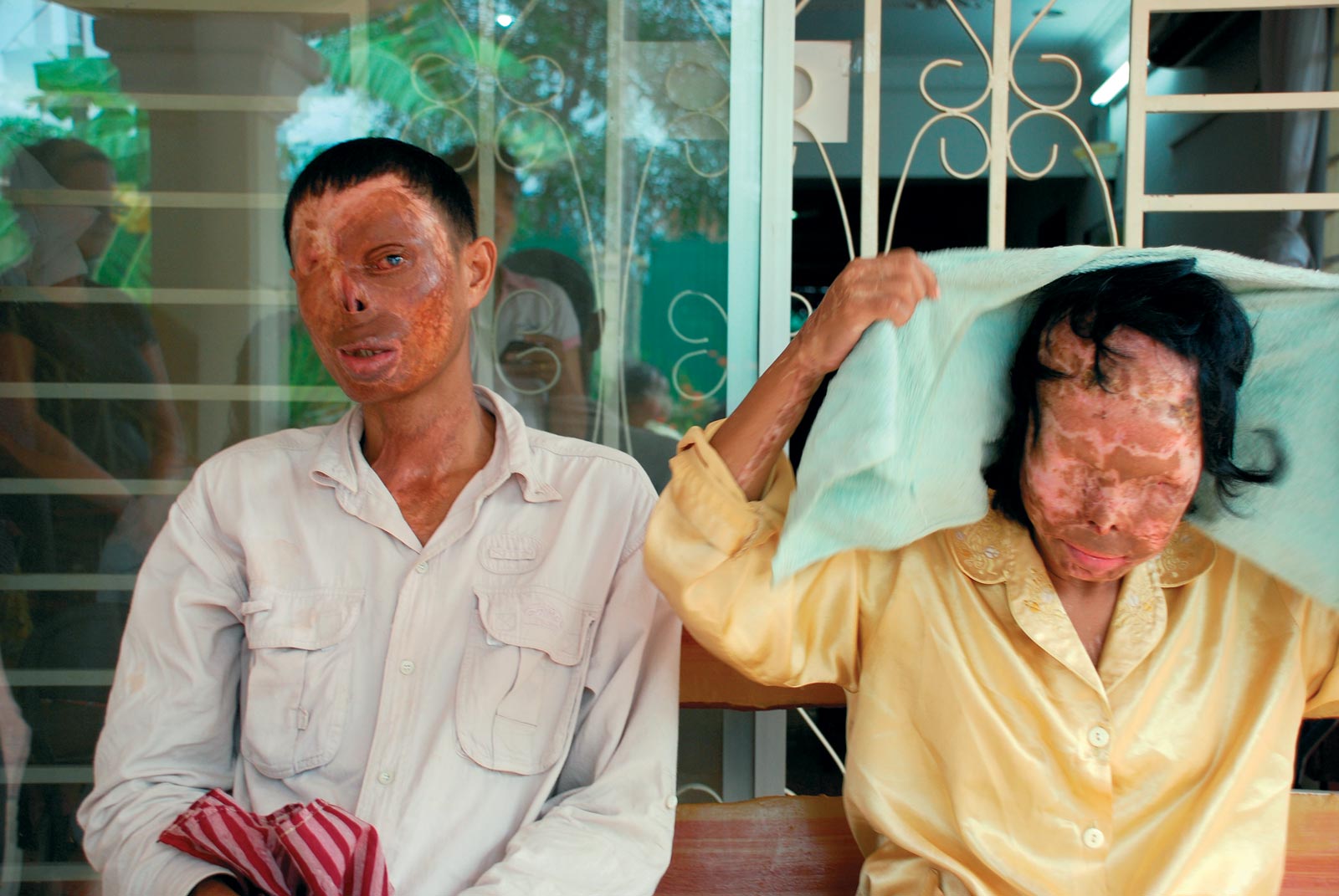
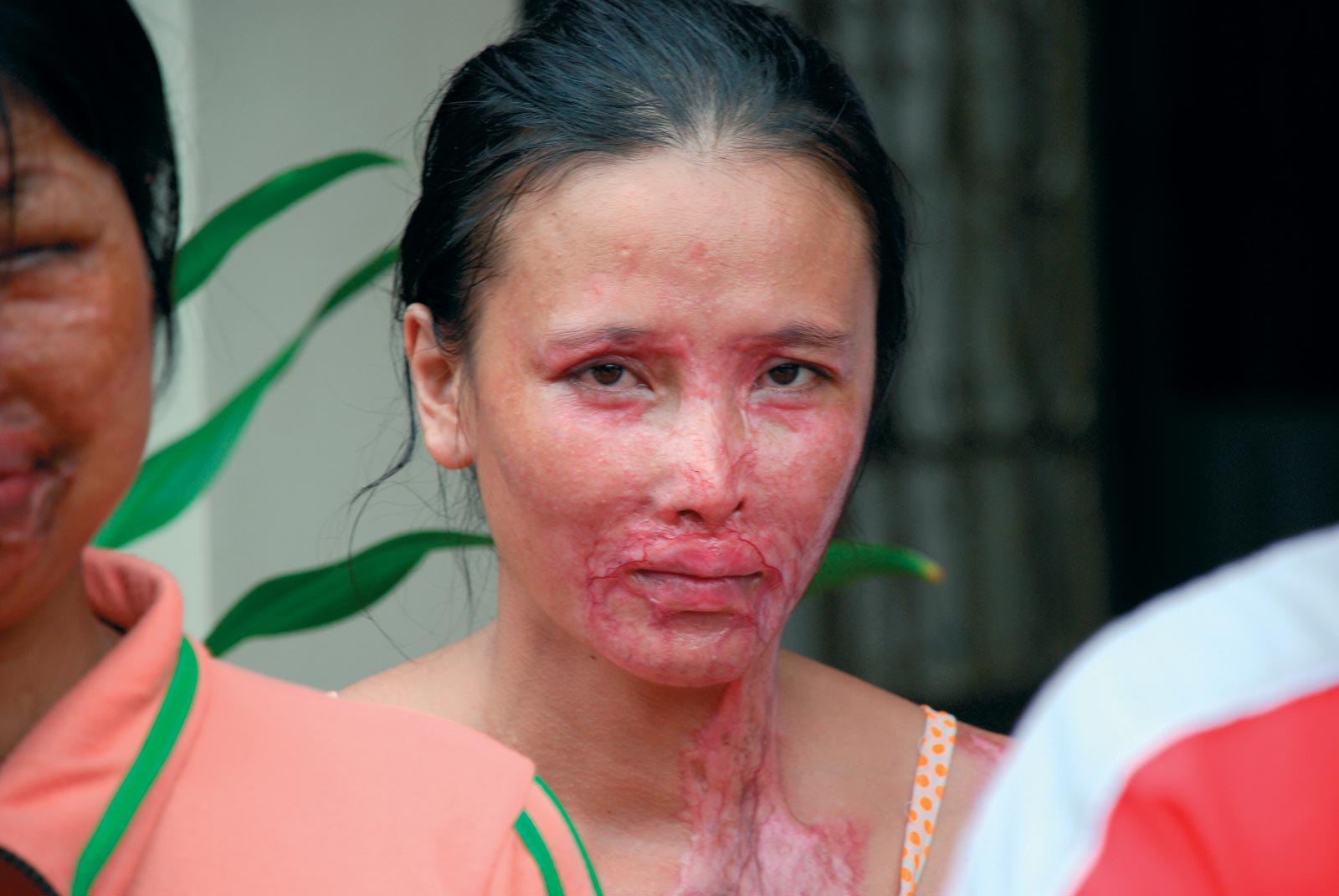
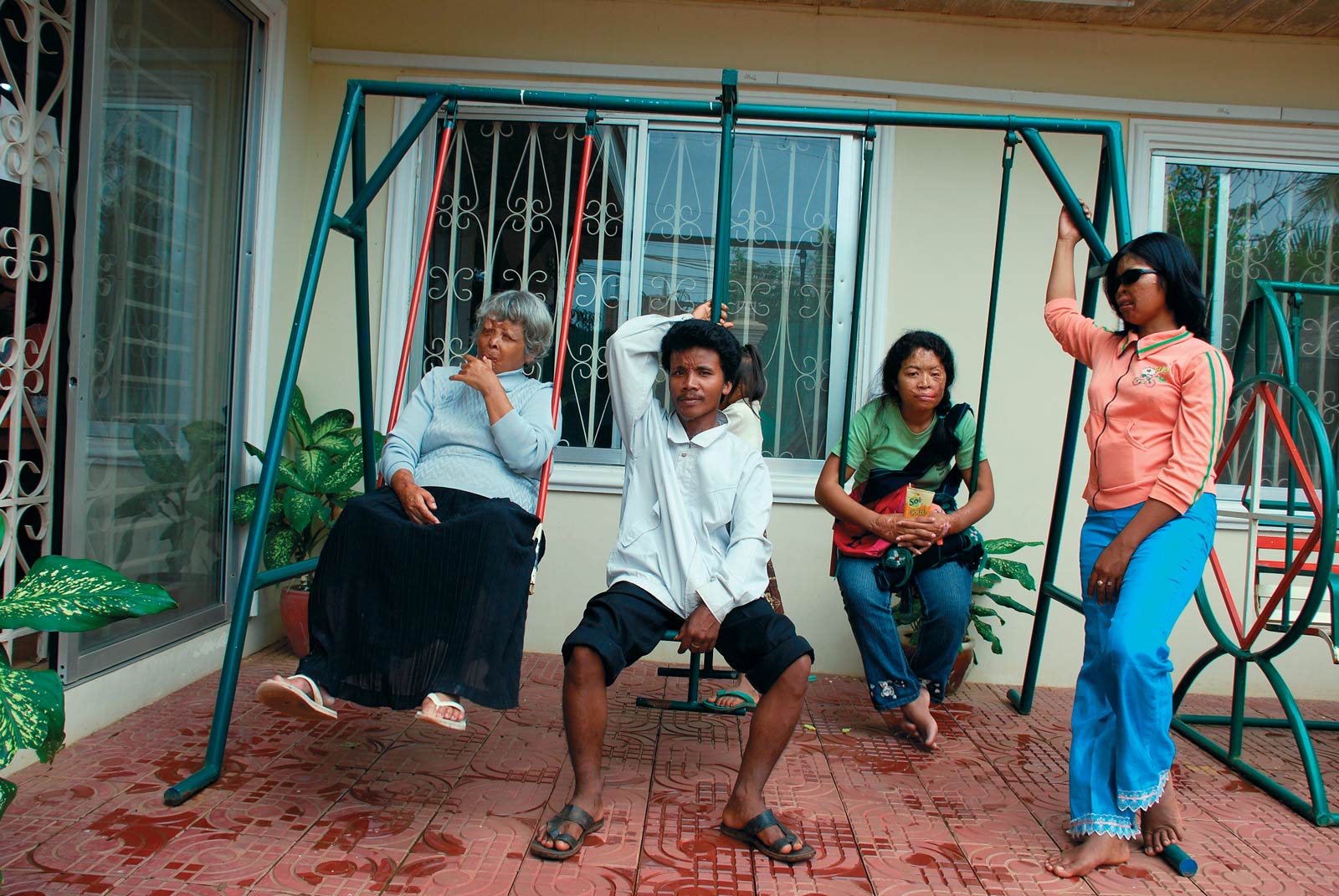
Khairul Hafiz, is the project manager for CASC at PT-house. Before coming to Cambodia he worked for four years in Bangladesh with acid burn victims and is here to share his experience with local NGOs working with victims in Cambodia. Bangladesh is well known for acid attacks. In 2002, two new laws were implemented regarding acid violence: one could no longer sell or carry acid without a government licence, and acid attacks became punishable by death.
Khairul says, “In 2002 we had about 500 attacks a year. That’s down to 200 now, falling between 20-30% a year. In Cambodia there’s about 50 attacks a year. Bangladesh’s population is ten times bigger than Cambodia’s so acid attacks here are actually at the same level statistically as they were in Bangladesh in 2002. By strengthening the laws regarding selling, transporting and containing acid, and handing out stiffer sentences to perpetrators, the government of Cambodia would probably achieve the same results.”
There are 139 known acid attack victims in Cambodia. The true number is probably much higher. The disparity is caused by either the victim dying or the attack never being reported to the police. CASC is in contact with 90% of these victims, who come to PT-house on a regular basis.
“There’s a common misconception in society that acid attacks are always love related, but that’s not the case” says Khairul. “It could be business, family, land and property disputes that trigger the attacks. A lot of the victims here are unintentional burn victims. They stood, sat, or slept next to the person the perpetrator intended to harm. We treat several children here with severe burns that are absolutely innocent but will be traumatised for life. Some of them are orphaned because their mothers died from the attack.”
He added that the best thing to do in the case of an attack is to keep pouring water over the victim. Never apply creams, soaps or toothpaste. This will only aggravate the burning.
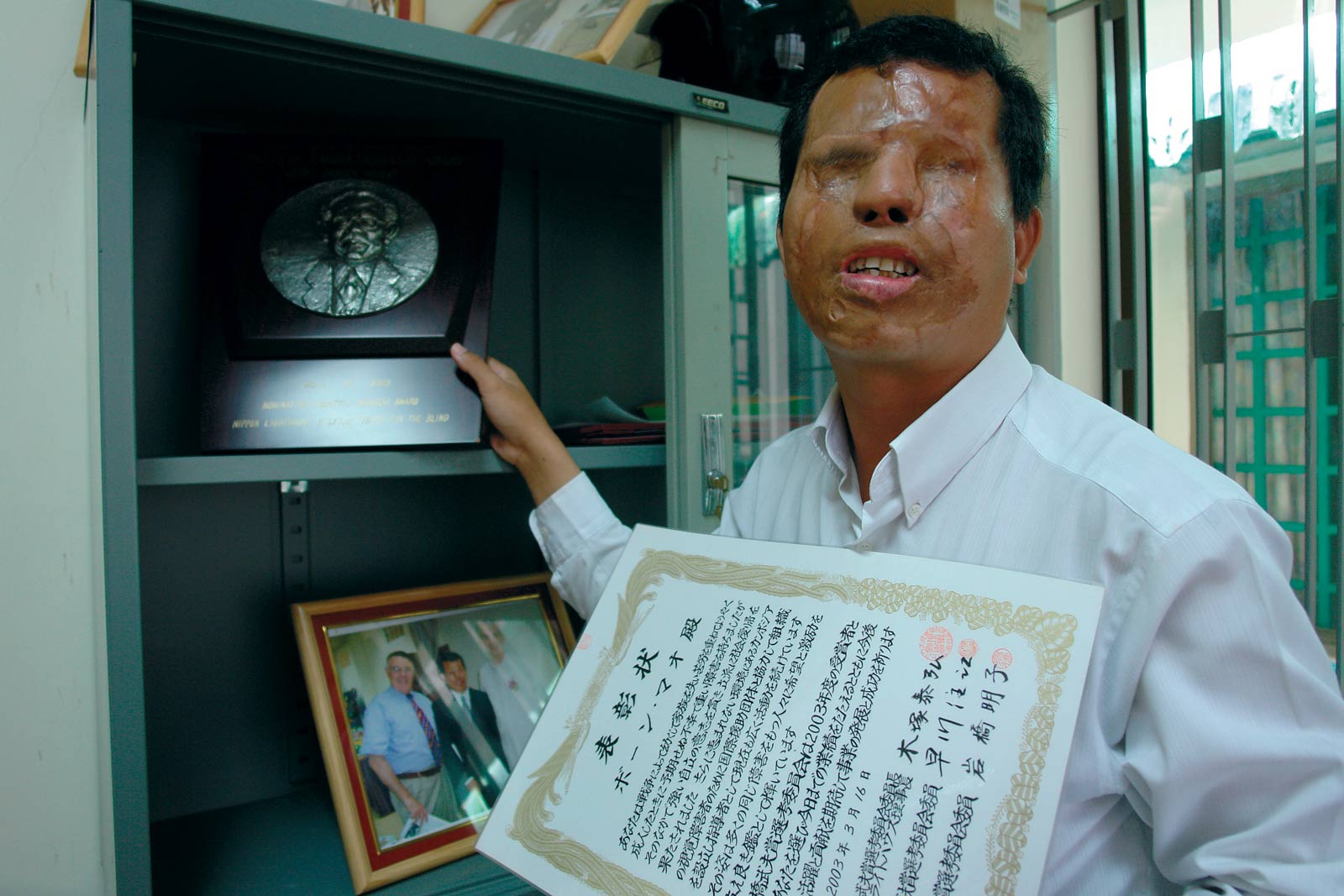
Mr Boun Mao, 35, is the executive director of the Association of the Blind in Cambodia. He used to work as a moto-taxi driver to pay for his studies and was attacked with battery acid in 1993 by a customer who wanted to rob him.
“I felt a warm sensation on my face that reminded me of hot water. I didn’t know that it was acid. After a while it started to burn. I was alone in a dark alley.
After an hour some other moto-taxi drivers found me and took me to a hospital where nothing was done to help me.
Then I was moved to the UN hospital, it took two hours. At that time I felt like a chicken that had just had its throat cut, flapping around without being able to control my body. In the beginning I felt like killing myself, how would you feel if you lost your sight in a split second?
Imagine being blindfolded and never having the blindfold removed. It took me a year to accept that I would be an acid burn victim forever.
I was still going through operations when I attended a program that was designed to make me able to see for myself again.
I started from scratch and didn’t meet other acid burn victims during my treatment.
I had seen and heard about other victims before my own accident and thought that becoming an acid burn victim was possibly the worst fate a human being could experience.
The society knows nothing about acid burn victims in general, that’s why they discriminate. They always think that acid attacks are love related, but others are business related, caused by envy or disagreements concerning deals, and for the robber who can’t afford a gun, acid is a cheap replacement.
People don’t understand how serious a crime it is to pour acid over another human being, that’s why the laws must be improved.
The general population must be better educated so future attacks can be prevented. The perpetrators don’t realise the permanent damage they do to the lives of their victims. How would they feel if they were in my shoes?”


